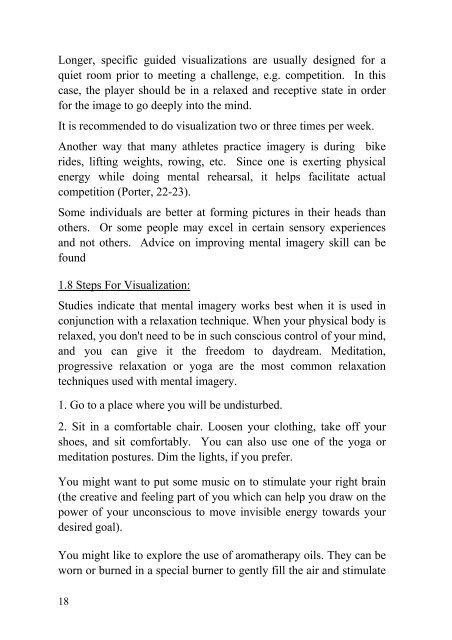THE MAGICAL POWER OF MENTAL IMAGES - DEAN AMORY
José Ortegay Gasset was so impressed by the power of metaphors that he compared them to a tool for creation which God forgot inside of us when he created man. When I asked myself where metaphors get this tremendous power from, I realized that mankind has an even much more powerful tool at its disposition: Mental Imagery. Mental Imagery is the key to achieving our goals and the internal screen on which we project our dreams. It allows us to simulate procedures; familiarize with environments and situations before we get to know them in "real life"; It helps us to relax, but just as well will arouse us or prepare us for future actions. With the help of Mental Imagery, we can build confidence and readiness, stimulate healing and recovery, change our behaviour or literally borrow the mind of a genius. How to learn and implement this power and benefit from its many advantages, is what this book is all about.
José Ortegay Gasset was so impressed by the power of metaphors that he compared them to a tool for creation which God forgot inside of us when he created man.
When I asked myself where metaphors get this tremendous power from, I realized that mankind has an even much more powerful tool at its disposition: Mental Imagery.
Mental Imagery is the key to achieving our goals and the internal screen on which we project our dreams. It allows us to simulate procedures; familiarize with environments and situations before we get to know them in "real life"; It helps us to relax, but just as well will arouse us or prepare us for future actions. With the help of Mental Imagery, we can build confidence and readiness, stimulate healing and recovery, change our behaviour or literally borrow the mind of a genius.
How to learn and implement this power and benefit from its many advantages, is what this book is all about.
Create successful ePaper yourself
Turn your PDF publications into a flip-book with our unique Google optimized e-Paper software.
Longer, specific guided visualizations are usually designed for a<br />
quiet room prior to meeting a challenge, e.g. competition. In this<br />
case, the player should be in a relaxed and receptive state in order<br />
for the image to go deeply into the mind.<br />
It is recommended to do visualization two or three times per week.<br />
Another way that many athletes practice imagery is during bike<br />
rides, lifting weights, rowing, etc. Since one is exerting physical<br />
energy while doing mental rehearsal, it helps facilitate actual<br />
competition (Porter, 22-23).<br />
Some individuals are better at forming pictures in their heads than<br />
others. Or some people may excel in certain sensory experiences<br />
and not others. Advice on improving mental imagery skill can be<br />
found<br />
1.8 Steps For Visualization:<br />
Studies indicate that mental imagery works best when it is used in<br />
conjunction with a relaxation technique. When your physical body is<br />
relaxed, you don't need to be in such conscious control of your mind,<br />
and you can give it the freedom to daydream. Meditation,<br />
progressive relaxation or yoga are the most common relaxation<br />
techniques used with mental imagery.<br />
1. Go to a place where you will be undisturbed.<br />
2. Sit in a comfortable chair. Loosen your clothing, take off your<br />
shoes, and sit comfortably. You can also use one of the yoga or<br />
meditation postures. Dim the lights, if you prefer.<br />
You might want to put some music on to stimulate your right brain<br />
(the creative and feeling part of you which can help you draw on the<br />
power of your unconscious to move invisible energy towards your<br />
desired goal).<br />
You might like to explore the use of aromatherapy oils. They can be<br />
worn or burned in a special burner to gently fill the air and stimulate<br />
18


















